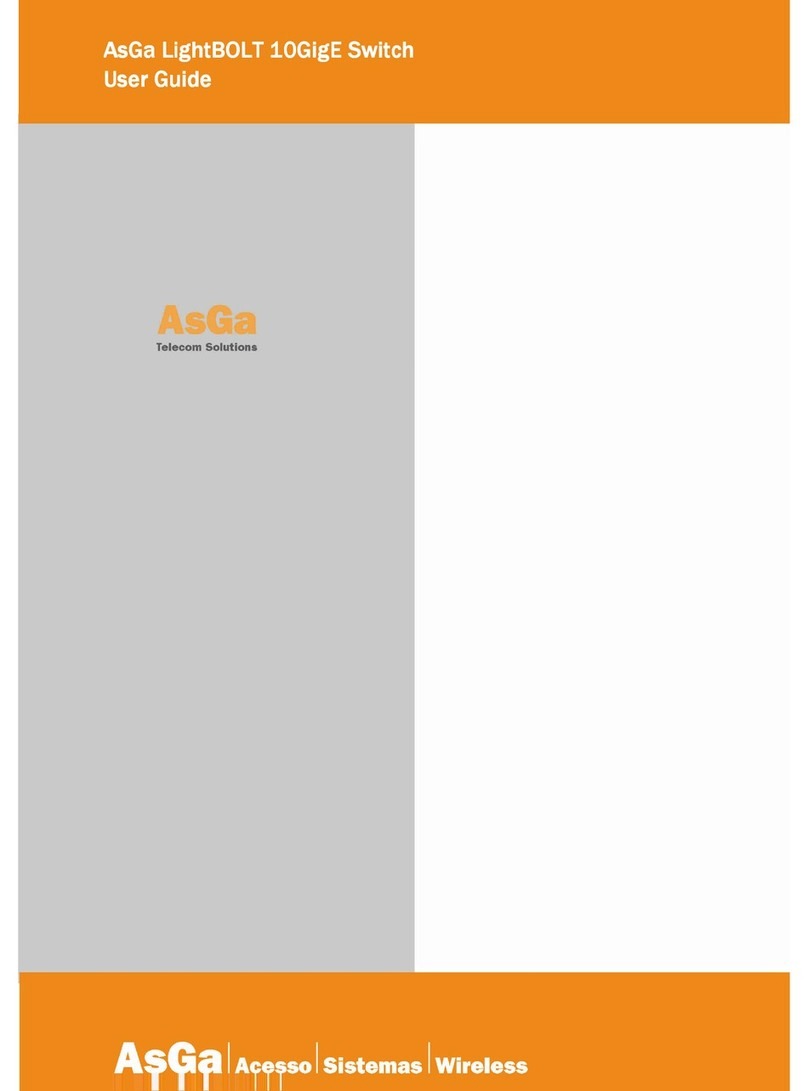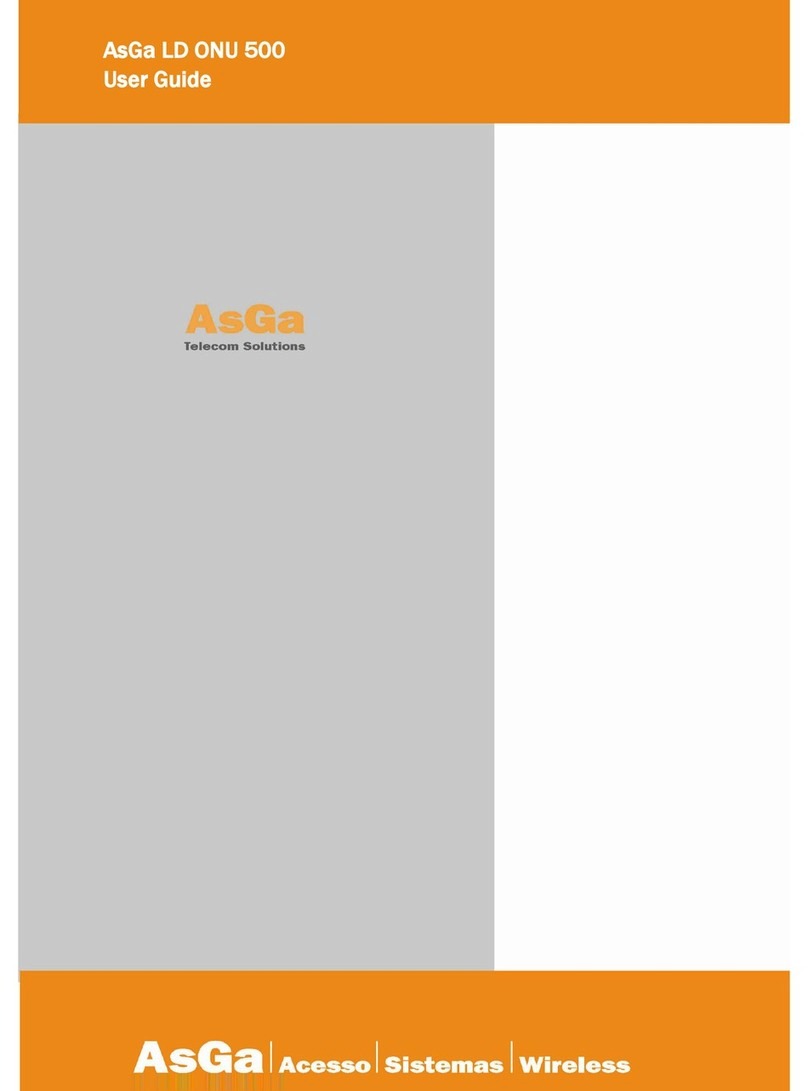AsGa Light
AsGa LightAsGa Light
AsGa LightB
BB
Bo t 10GigE Switch
o t 10GigE Switcho t 10GigE Switch
o t 10GigE Switch
U
UU
User
ser ser
ser Guide
GuideGuide
Guide
Introduction
IntroductionIntroduction
Introduction
6
1 INTRODUCTION
Over the past several years, Ethernet has been the most popular choice of technology for
local area networks (LAN). There are millions of Ethernet users worldwide and still counting growing.
In 1998, the standard for 1-Gigabit Ethernet was released. Today 1-Gigabit Ethernet dominate the
LAN markets.
As the demand for high-speed networks continues to grow, the need for a faster Ethernet
technology became a need. By March 1999, a working group was formed at IEEE 802.3 Higher
Speed Study Group (HSSG) to develop a standard for 10-Gigabit Ethernet, today 10GigE is a reality.
10-Gigabit Ethernet is basically the faster-speed version of Ethernet. It will support the data rate of 10
Gb/s. It offers similar benefits to those of the preceding Ethernet standard.
The potential of 10-Gigabit Ethernet to solve the actual and future network bottlenecks are
enormous.
There are broad groups of users who demand 10-Gigabit Ethernet; for example, enterprise
users, universities, telecommunication carriers, and Internet service providers, but in a last instance;
users and their application will be pushing up this new generation of equipments and its use.
One of the main benefits of 10-Gigabit standard is that it offers a low-cost solution to solve the
current and future demands for bandwidth. Not only the cost of installation is low, but the cost of
network maintenance and management is minimal as well. Management and maintenance for 10-
Gigabit Ethernet may be done by local network administrators as it is done actually for 1GigE
networks.
In addition to the cost reduction benefit, 10-Gigabit Ethernet may allow faster switching. Since
10-Gigabit Ethernet uses the same Ethernet format, it allows seamless integration of LAN, MAN, and
WAN. There is no need for packet fragmentation, reassembling, or address translation 10-Gigabit
Ethernet also offers straightforward scalability (10/100/1000/10000 Mb/s).
Upgrading to 10-Gigabit Ethernet is simple since the upgrade paths are similar to those of 1-
Gigabit Ethernet.
AsGa LightBOLT 10GigE switches offer a seamless path migration to your 10Gig solution,
integrating in just one rack unit 24 1GigE electrical ports (two optical 1GigE combo port available) plus
four 10GigE ports with an unparallel switching capacity: less than 3 microsecond switching time at
full load. In addition to many other capabilities, all switching/routing decisions are solved by hardware,
all Access Control List (ACL´s) are also solved in hardware off loading all host CPU processing time
related with those and many other tasks.
LightBolt family of switches is composed by:
LightBotl 28322-E
•24 Ports 10/100/1000. Electrical ports. Two Combo ports Electrical/Optical (base on SFP
technology).
•4 ports 10GE (Two XSFP based plus two 10Gig electrical port XC4 compatible).
•1 Rack Unit.
•8K MAC Table.
•4K L3 IPV4 Table.
LightBotl 28522-E
•24 Ports 10/100/1000. Electrical Ports. Two Combo ports Electrical/Optical (base on SFP
technology).
•4 ports 10GE (Two XSFP based plus two 10Gig electrical port XC4 compatible).
•1 Rack Unit.
•16K MAC Table.
•8K L3 IPV4 Table.





























